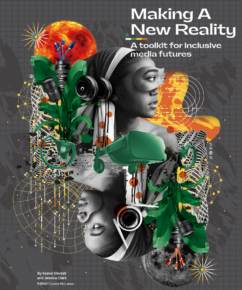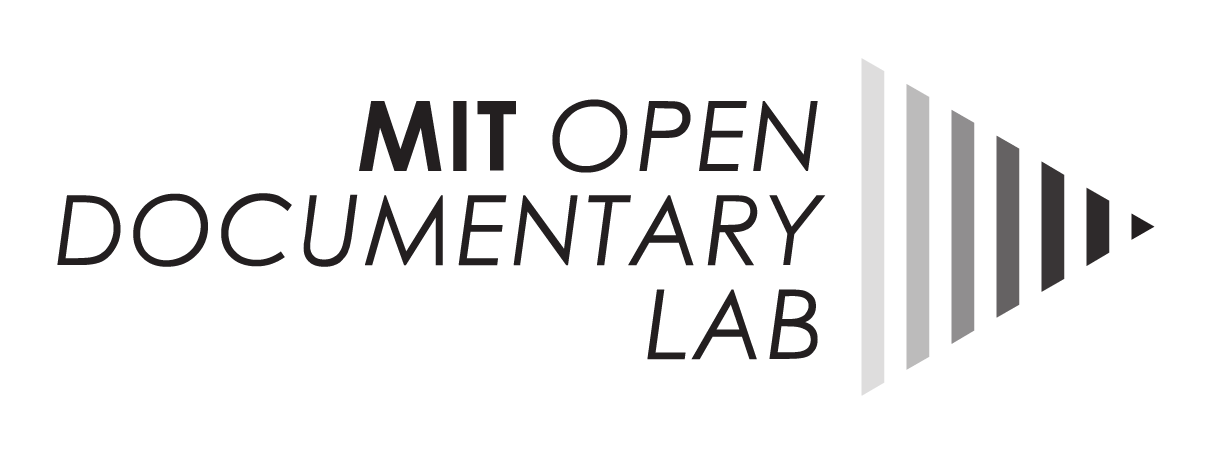05 Oct ODL Affiliate Jessica Clark & Carrie McLaren Launch Making a New Reality: A Toolkit for Inclusive Media Futures
 Cambridge, Mass. (October 5th, 2020) — Last month, ODL Affiliate Jessica Clark and Carrie McLaren launched Making a New Reality: A Toolkit for Inclusive Media Futures, a project that updates and supplements Kamal Sinclair’s original research with recommendations and resources to help readers further diversity, equity, and inclusion in emerging media.
Cambridge, Mass. (October 5th, 2020) — Last month, ODL Affiliate Jessica Clark and Carrie McLaren launched Making a New Reality: A Toolkit for Inclusive Media Futures, a project that updates and supplements Kamal Sinclair’s original research with recommendations and resources to help readers further diversity, equity, and inclusion in emerging media.
To celebrate the launch, we spoke with Jessica Clark about what the toolkit is and why she and Carrie McLaren created it.
For those unfamiliar, could you describe what Making a New Reality is?
JC: Making a New Reality began as a research project that Kamal Sinclair conducted with support from the Ford Foundation, exploring the possibilities for making emerging media more diverse and inclusive. She started the research around 2017, and we ended up syndicating articles from the project in Immerse through 2018. At the time, she was the director of the Sundance Institute’s New Frontier Lab programs, so she was right in the middle of a vibrant curation and discussion space—at the forefront of experimenting with how augmented and virtual reality, AI, and other new technologies might be used for storytelling.
Why did you decide to create this toolkit?
JC: While the series sparked a lot of interest, readers found it difficult to track across many pieces, and called for a more unified publication that they could use to inform their work, for teaching, etc. So with additional support from Ford, we took on the challenge of boiling down all of Kamal’s insights and the recommendations of the 100+ interviewees she spoke with, and making them more current and actionable. Kamal had just taken a new job as the Executive Director of the Guild of Future Architects, which meant her time was limited. So, I tackled this revision with Carrie McLaren—who is my art director at the firm I founded, Dot Connector Studio, as well as the associate editor of Immerse.
We restructured the research around three types of solutions to increase equity in emerging media: individual actions that readers could take; institutional interventions for those based at production studios, schools, universities, etc.; and system-level interventions, which require action by multiple organizations, policy changes, or cross-disciplinary organizing.
To give these sections heft, we added more than 75 new resources designed to help readers learn more and take action. We also added in new pieces of analysis related to concerns about the bias that is baked into AI, and about the surveillance culture of big tech, since those debates have become front-of-mind in the last few years. Finally, we designed a new suit for Dot Connector’s strategy deck, the Impact Pack, which focuses on helping media makers and funders think through the unintended consequences of their projects.
What would you say are the principal takeaways from the toolkit?
JC: The primary takeaway is that our society can no longer afford to have the technology and media that shapes our everyday experiences and conceptions of the truth be created by a cookie-cutter elite. Diversifying the teams that build communications technology, the storytellers chosen to experiment with emerging tools, and the subject matter that is addressed are all crucial if we want to broaden our horizons, understand one another, and create an accurate account of what’s really happening in the world. This is not just idealism—bringing in more voices and perspectives can make media companies more profitable, can generate new discoveries, and can create jobs. There are practical tools for addressing these problems. We want to get them into the hands of independent makers, those working in large tech companies, policymakers, funders…really anyone who has a stake in these issues.
Why is the toolkit important in this current moment?
JC: We are facing huge problems with our public health, democracy, the environment, and the economy, and we need as many perspectives as possible in the mix when it comes to contemporary storytelling. The current debate in the U.S. around structural racism and violence is relevant to all sectors, but both media and technology have an outsized influence on public discourse. So it is doubly important that those working in these sectors are aware of their biases and prepared to address them.
What do you think is misunderstood about equity in media?
JC: This is not a bean-counting exercise. We are not making a simple plea for diversity in media. The toolkit addresses many other ways in which those working in emerging media can expand their understanding and build more transformative projects. These range from adopting the principles of universal design, to working more collaboratively, to taking a deeper look at their power as allies and advocates, to engaging in world building.
Media is also defined very expansively here—we included a short list of categories of emerging media at the end, but this terrain changes all the time. We hope that no matter what the next tech innovation might be, the principles we’re offering in this toolkit will be useful for years to come.
Anything else you would like to add?
JC: The toolkit is also beautiful! We worked with a great design team, In-House International, and being able to finally hold a printed copy was one of the joys of this crazy, tumultuous year.
The project is available as a free PDF download or a print-on-demand book. The Making a New Reality website also offers a few excerpts, as well as direct links to resources featured in the book’s solutions.



